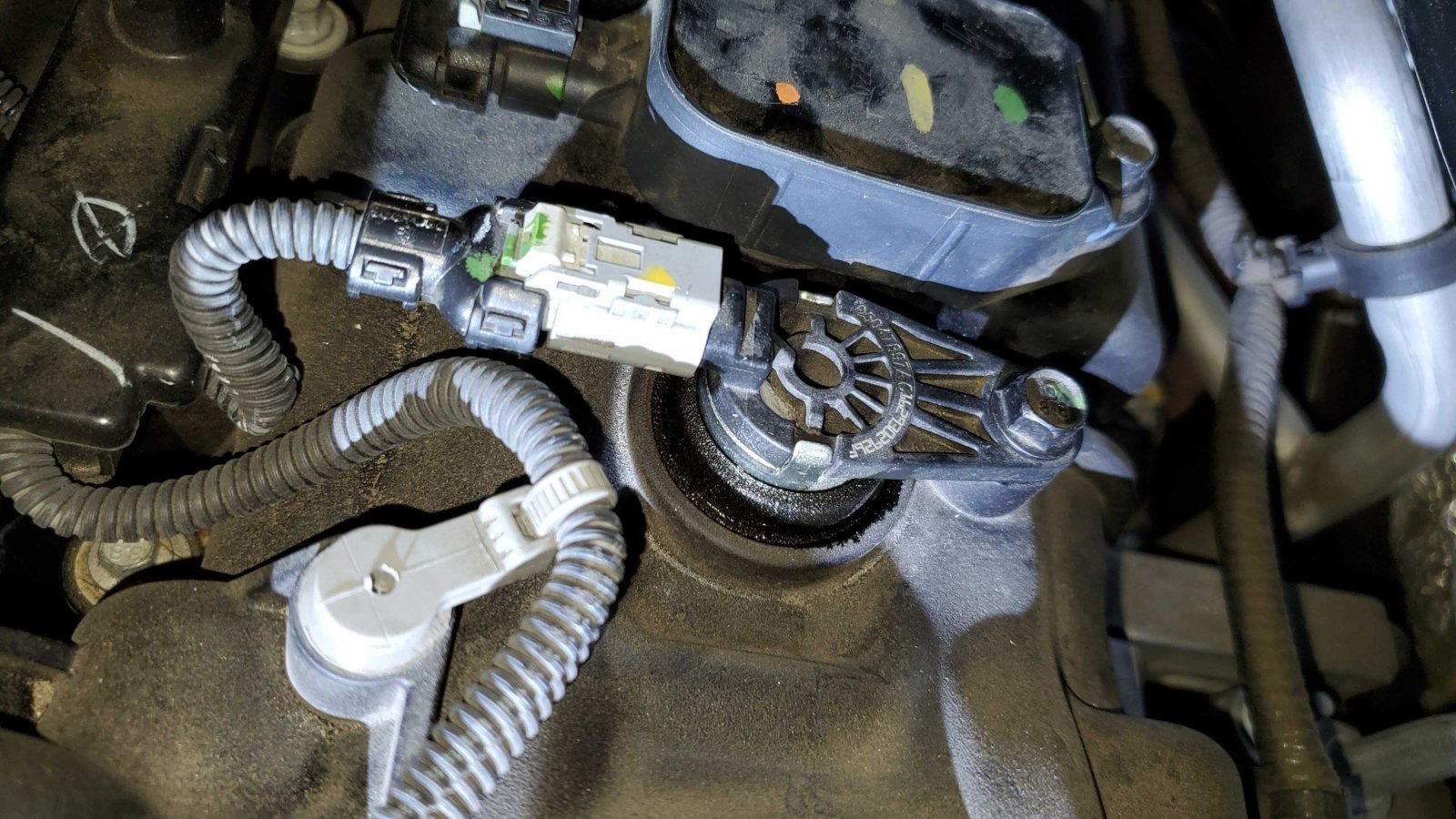Introduction
If you own a 2015 Jeep Cherokee and are experiencing a misfire problem, you’re not alone. This article will guide you through the possible causes of same problem and solutions to help you fix the issue.
Jeep Cherokee is one of the most popular SUVs on the market, known for its reliability, off-road capabilities, and comfort. However, even the most reliable vehicles can occasionally face issues, and one of the most common issues with the 2015 Jeep Cherokee is a misfire problem.
A misfire is when the engine’s cylinders fail to ignite correctly, causing a lack of power, poor fuel economy, and sometimes even stalling. The 2015 Jeep Cherokee misfire problem can be frustrating, but with the right information, you can easily diagnose and fix the issue.
In this article, we’ll go through the common causes of the 2015 Jeep Cherokee misfire problem, how to diagnose it, and the solutions to fix it.
Causes of the 2015 Jeep Cherokee Misfire Problem:
The 2015 Jeep Cherokee was a popular SUV that offered drivers a reliable and comfortable ride. However, some owners reported experiencing misfire problems with their vehicles, which can be frustrating and potentially dangerous if not addressed. Misfires occur when the fuel mixture in one or more cylinders fails to ignite properly, resulting in a rough-running engine or even stalling.
Faulty Ignition Coil
One common culprit is a faulty ignition coil, which can cause a weak or intermittent spark in the cylinder. This fault can be caused by a damaged or worn-out coil, or by electrical problems in the wiring or connectors leading to the coil.
Faulty Spark Plug
A spark plug is a crucial component of an internal combustion engine, and if it is not functioning properly, it can cause a range of problems, including misfires, rough idle, and reduced fuel efficiency. In some cases, a faulty spark plug may not ignite the fuel mixture in the cylinder at all, leading to a complete loss of power.
A spark plug can become faulty due to a variety of reasons, such as wear and tear, damage, or corrosion. Over time, the electrode on the spark plug may become worn, which can reduce its ability to create a spark. Additionally, the ceramic insulator may crack or become contaminated with oil or carbon, which can also impair its performance.
Clogged or dirty fuel injector
Another possible cause of misfires is a clogged or dirty fuel injector. If the injector is unable to deliver fuel to the cylinder, the fuel mixture will be too lean and may not ignite properly. This can be caused by dirt or debris in the fuel system, or by a failing fuel pump that is not providing enough pressure to the injectors.
Dirty Air Filter
The air filter in a vehicle is responsible for preventing dirt, debris, and other contaminants from entering the engine. Over time, the car’ air filter can become clogged with dirt and debris, which can reduce airflow to the engine and affect its performance.
A dirty air filter can lead to a range of problems, including reduced fuel efficiency, decreased power, and engine misfires. When the engine is not getting enough air, the fuel mixture may become too rich, which can cause the engine to run poorly or even stall.
Malfunctioning crankshaft position sensor
A malfunctioning crankshaft position sensor can also lead to misfires in the 2015 Jeep Cherokee. The sensor is responsible for providing the engine control module with information about the position of the crankshaft, which is used to determine the timing of the ignition and fuel injection. If the sensor is faulty, the timing may be off and the engine may misfire.
Clogged air filter or faulty oxygen sensor
A clogged air filter or faulty oxygen sensor can also contribute to misfires in the 2015 Jeep Cherokee. A dirty air filter can restrict airflow to the engine, leading to a lean fuel mixture and potential misfires. An oxygen sensor that is not functioning properly can also cause a lean condition and misfire.
Diagnosing the 2015 Jeep Cherokee Misfire Problem
Diagnosing a misfire problem in a 2015 Jeep Cherokee can be challenging, but there are several steps that can be taken to identify the underlying cause of the issue. Here are some common diagnostic steps that can be taken:
Check for error codes
The first step in diagnosing a misfire problem is to connect a diagnostic scanner to the vehicle’s onboard computer to check for error codes. These codes can provide valuable information about the specific cylinder or component that is causing the misfire.
Inspect ignition components
If the error codes indicate a problem with the ignition system, the next step is to inspect the ignition components, including the spark plugs, ignition coils, and wiring. Worn or damaged spark plugs or ignition coils can cause weak or intermittent sparks, leading to misfires.
Check fuel system
A clogged or malfunctioning fuel injector can cause a misfire by delivering insufficient fuel to the cylinder. Checking the fuel pressure and inspecting the fuel injectors can help determine if this is the cause of the problem.
Examine the air intake system
A dirty or clogged air filter can reduce airflow to the engine, leading to a lean fuel mixture and misfires. Inspecting and cleaning or replacing the air filter can help resolve this issue.
Check engine timing
If the misfire is not caused by a problem in the ignition, fuel, or air intake systems, it may be due to a timing issue. Checking the engine timing and inspecting the timing belt or chain can help determine if this is the case.
Check Engine Light
If the check engine light is on, use an OBD-II scanner to retrieve the trouble code. The code will give you a clue about the issue causing the transmission to misfire.
Visual Inspection
Check the ignition coil, spark plugs, fuel injectors, and air filter for any visible signs of wear or damage.
Perform a compression test
If none of the above steps has identified the issue, a compression test can be performed to check the health of the engine’s cylinders. Low compression in one or more cylinders can indicate a problem with the piston rings or valves, which can cause misfires.
Fuel Pressure Test
Perform a fuel pressure test to check if the fuel pump is working correctly. A faulty fuel or water pump together can cause a misfire.
Solutions to the 2015 Jeep Cherokee Misfire Problem
If you are experiencing a misfire problem in your 2015 Jeep Cherokee, there are several solutions that can be implemented to resolve the issue. Here are some common solutions to the problem:
Replace the Ignition Coil Pack
Worn or damaged ignition coil packs can cause weak or intermittent sparks, leading to misfires. If the ignition coil pack is found to be faulty during the diagnostic process, replacing it can help resolve the problem.
Replace Spark Plugs
Spark plugs are a crucial component of the ignition system, and if they are worn or damaged, they can cause misfires. Replacing the spark plugs can improve the performance and efficiency of the engine.
Clean Fuel Injectors
Dirty or clogged fuel injectors can cause misfires by delivering insufficient fuel to the cylinder. Cleaning the fuel injectors or replacing them if necessary can help resolve this issue.
Replace Air Filter
A dirty or clogged air filter can reduce airflow to the engine, leading to a lean fuel mixture and misfires. Replacing the air filter can improve the engine’s performance and efficiency.
Check Wiring and Connections
Faulty wiring or loose connections can cause problems in the ignition system, leading to misfires. Checking the wiring and connections and repairing or replacing any damaged components can help resolve this issue.
Replace Fuel Pump
If the fuel pressure is found to be low during the diagnostic process, a faulty fuel pump may be the cause of the problem. Replacing the fuel pump can help resolve the issue and improve the engine’s performance.
Check Timing Belt
If the engine timing is found to be off during the diagnostic process, a worn or damaged timing belt may be the cause of the problem. Replacing the timing belt can help resolve the issue and improve the engine’s performance.
Overall, the solutions to the 2015 Jeep Cherokee misfire problem will depend on the underlying cause of the issue. It is important to have the vehicle diagnosed by a qualified mechanic to ensure the proper solution is implemented. Regular maintenance, such as replacing spark plugs, cleaning the air filter, and checking the fuel injectors, can also help prevent misfire problems from occurring in the first place.
Frequently Asked Questions
What is a misfire problem in a 2015 Jeep Cherokee?
A misfire problem occurs when one or more cylinders in the engine fail to ignite properly, causing the engine to run rough, idle poorly, or lose power. This can be caused by a number of issues, including faulty spark plugs, clogged fuel injectors, or problems with the ignition or fuel system.
What are the symptoms of a misfire problem in a 2015 Jeep Cherokee?
Symptoms of a misfire problem can include rough idling, loss of power or acceleration, engine vibration, and a check engine light. The symptoms may be intermittent or continuous, depending on the exact cause of the problem.
How is a misfire problem diagnosed in a 2015 Jeep Cherokee?
A misfire problem can be diagnosed by connecting a diagnostic scanner to the vehicle’s onboard computer to check for error codes. If the error codes indicate a problem with the ignition, fuel, or air intake systems, further inspection of those components may be required.
Can a misfire problem be fixed by replacing the spark plugs?
In some cases, a misfire problem can be resolved by simply replacing the spark plugs. Worn or damaged spark plugs can cause weak or intermittent sparks, leading to misfires. However, if the problem is caused by another component, such as a faulty ignition coil or clogged fuel injector, additional repairs may be necessary.
Is it safe to drive a 2015 Jeep Cherokee with a misfire problem?
Driving a vehicle with a misfire problem can cause further damage to the engine and reduce its lifespan. In addition, a misfire problem can cause the vehicle to stall or lose power unexpectedly, which can be dangerous. It is recommended to have the vehicle inspected and repaired as soon as possible.
How can a misfire problem in a 2015 Jeep Cherokee be prevented?
Regular maintenance, such as replacing spark plugs, cleaning the air filter, and checking the fuel injectors, can help prevent misfire problems from occurring in the first place. It is of course also important to address any warning signs or symptoms of a problem as soon as they arise to prevent further damage to the engine.
Conclusion
The 2015 Jeep Cherokee misfire problem can be frustrating, but it’s essential to diagnose and fix it promptly to avoid further damage to the engine. By following the steps in this article, you can easily diagnose the cause of the misfire and fix it.
Regular maintenance, such as replacing spark plugs and air filters, can also help prevent misfire problems in the future. If you’re unsure about diagnosing or fixing the issue, it’s best to seek professional help from a certified mechanic.













Leave a Reply